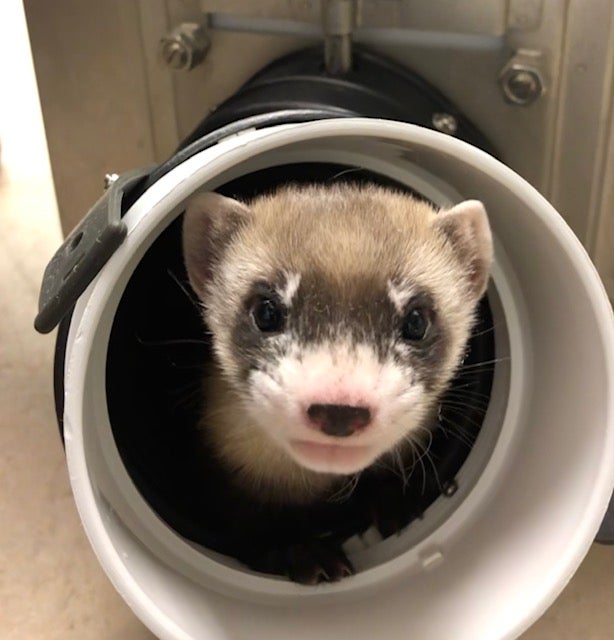
In December of 2020, when scientists managed the incredible feat of cloning the endangered black-footed ferret, they took a leap toward the renewed global priority to combat climate change and biodiversity loss. The cloning success both fulfilled the founding vision of Earth Day and frightened its strongest proponents. By using biotechnology to achieve one of conservation’s most critical goals—to restore genetic diversity to a species faced with a limited gene pool—conservationists made a step forward in saving a beloved species. But they did so by “tinkering” with the core mechanisms of life itself. This effort realized the vision of Earth Day founder and Nelson Institute namesake Gaylord Nelson, to foster “an environment of decency, quality and mutual respect for all other human beings and all other living creatures.” Would Nelson have recognized and valued this advance? We believe so. To restore biodiversity, we will have to innovate.
While none of this obviates the need for traditional conservation measures, like habitat protection and land management, we can and we should address the looming extinction crisis with the same bold and rapid approach used to fight COVID-19. A creative ethos and an open mind can release the power of new technologies.
Together, we have years of conservation experience. One of us is an environmental researcher and the other the co-founder and executive director of Revive & Restore. We understand the importance of supporting and restoring biodiversity, and we are teaming up with the world’s leading molecular biologists, technologists, conservation biologists, conservation organizations, ethicists and thought leaders to call for “Intended Consequences” to help us safely use all of the available tools that can provide the advantage we need to turn the tide on species loss.
Intended Consequences is a new, inclusive, ethical and rational framework that will help us envision bold conservation interventions and safely leverage biotechnology to win the race against extinction.
Some individuals worry about the unintended consequences of intervening with nature, including the use of genetic technology as well as traditional conservation restoration. However, alarming biodiversity loss tells us we must be more focused on the game-changing positive impacts that will result from a focus on Intended Consequences. If we fret endlessly about unintended consequences and wallow in uncertainty, we will inevitably witness the chilling result as a mass extinction plays out. Our current pivot point asks of us boldness and action as we consider biotechnology solutions and weigh the consequences of doing nothing.
The American chestnut, for example, will not survive without intervention. Prior to the industrial revolution, these trees formed endless stands in the Eastern forests of North America. By the 1940s a nonnative fungal blight killed an estimated four billion trees nationwide. As Eastern forests lost the American chestnuts, smaller trees established denser stands. This shift resulted in a new ecological state characterized by impoverished habitats, shrunken wildlife populations, inferior forest products and reduced biodiversity.
Towards the end of the 20th century, a team of innovative scientists began experimenting in the lab. They added a gene from wheat to the otherwise unaltered American chestnut genome. The resulting transgenic tree is no freak of nature. It is a 100 percent American chestnut that now produces an enzyme that degrades the blight’s toxin. Because of this single additional gene, it can coexist on landscapes where the invasive fungus also thrives.
This seemingly radical solution is an elegant example of the potential for biotechnology to enable species-saving interventions. American chestnut fans want seedlings to plant in their yards, and the Eastern Band of Cherokee Indians in North Carolina has signed on to plant these genetically engineered chestnut trees on tribal land. But this early enthusiasm is only part of the process.
Responsible intervention must be guided by the Intended Consequences framework, including a thorough risk assessment and detailed studies to test how the proposed intervention could affect the ecosystem. We now know that when transgenic chestnut leaves fall into forest pools, they are safe for wood frog tadpoles to eat. The Federal regulatory system is reviewing the American chestnut project now; if it passes muster, it will be the first to demonstrate how carefully considered genetic interventions can enable coexistence in the wild.
With both the American chestnut and the black-footed ferret, 21st-century conservation solutions began in the lab. Responsible genetic interventions resulted from pairing new biotechnologies with decades of natural history knowledge and careful research. Despite the wariness cultivated by fictional horror stories, biotechnology is simply one more tool in this earnest race against extinction. The American chestnut is a critical proof of concept, and the black-footed ferret project is underway now, but we need these positive outcomes for all endangered species. We want to see resilient wild populations flourishing in nature.
Perhaps, in the not-too-distant future, we will see biotechnology applied to help save coral reefs. Scientists are already exploring how genetic interventions could be used to adjust coral temperature tolerance. And with Intended Consequences in mind, Revive & Restore is designing the Advanced Coral Toolkit to develop new tools, including stem cells, probiotics and rapid diagnostics, that will increase our options for reef restoration. If we do not intervene, we could lose coral reefs forever.
Conservation is finally ready to embrace the innovative spirit that drives problem-solving in other fields. An interdisciplinary group of scientists and conservationists from around the world agreed, and together they recently authored the Intended Consequences Statement to provide an initial framework for responsible conservation intervention that follows in the footsteps of the black-footed ferret and the American chestnut tree.
The Intended Consequences framework incorporates the lessons learned from decades of successful conservation work and redirects us away from despair and toward an optimistic future, encouraging us to imagine solutions to seemingly intractable conservation problems and inspiring us to act. It’s something we can all agree on.
This is an opinion and analysis article.

